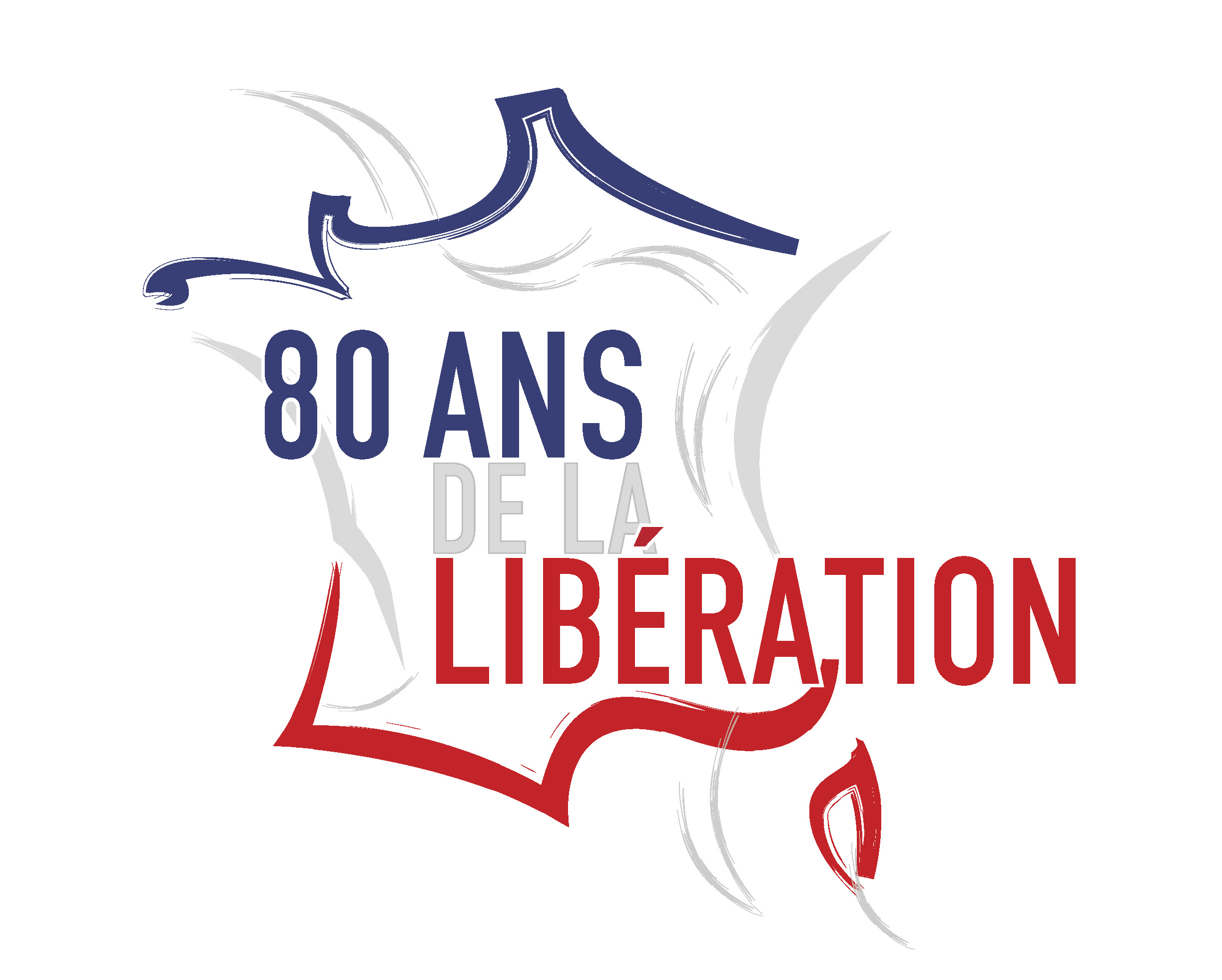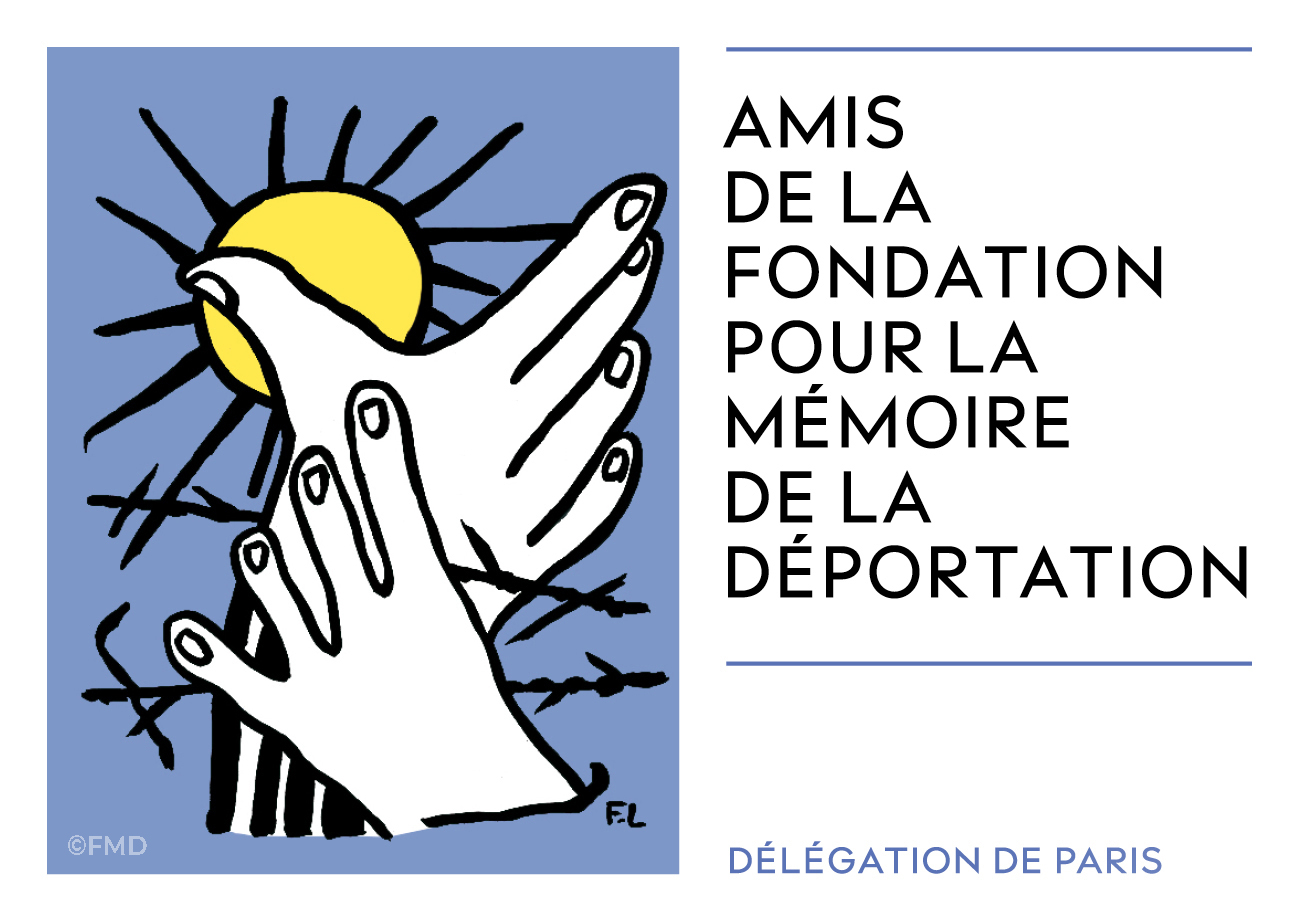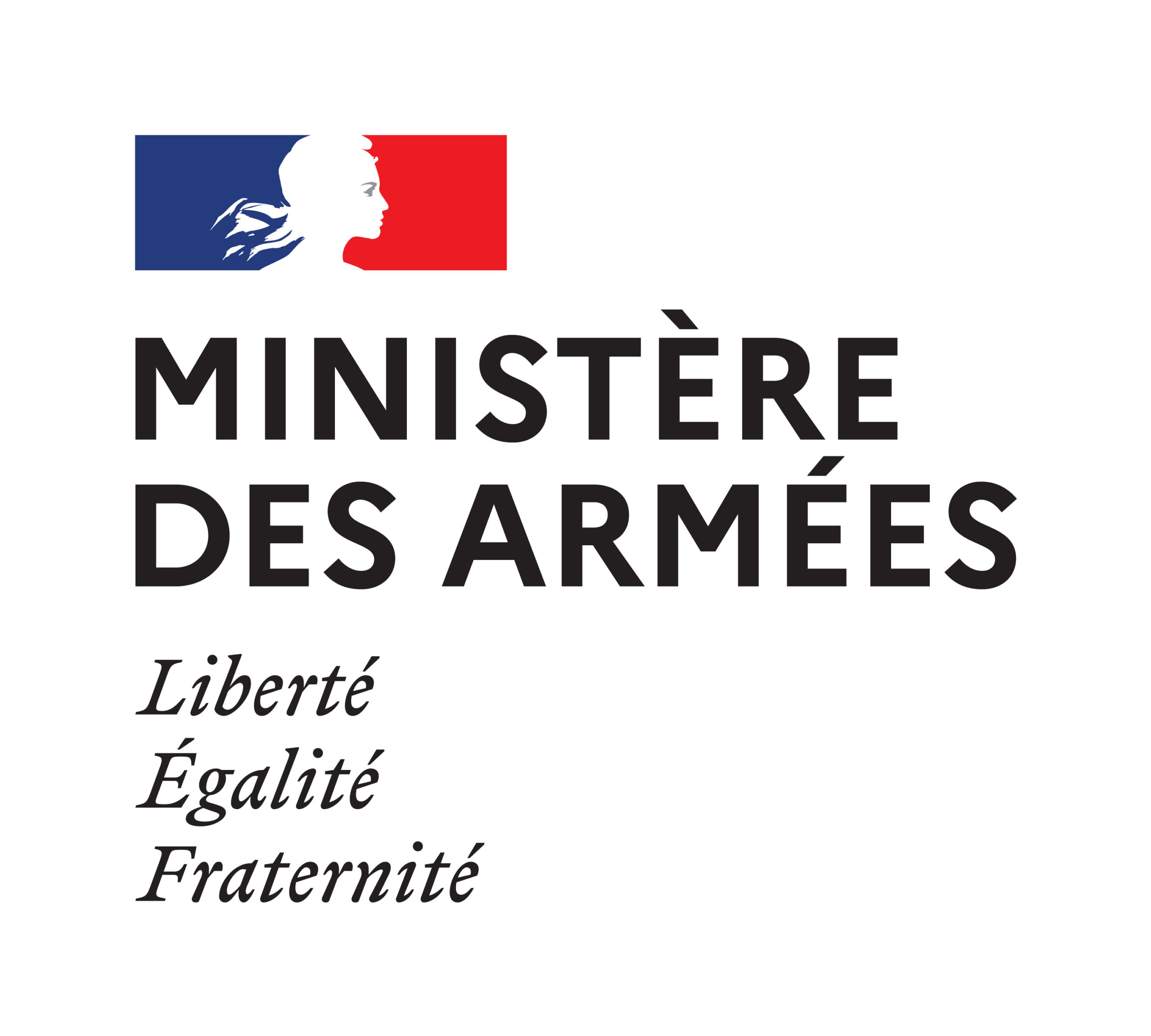In memory of the Jewish children
Stele inaugurated on 17 October 2017
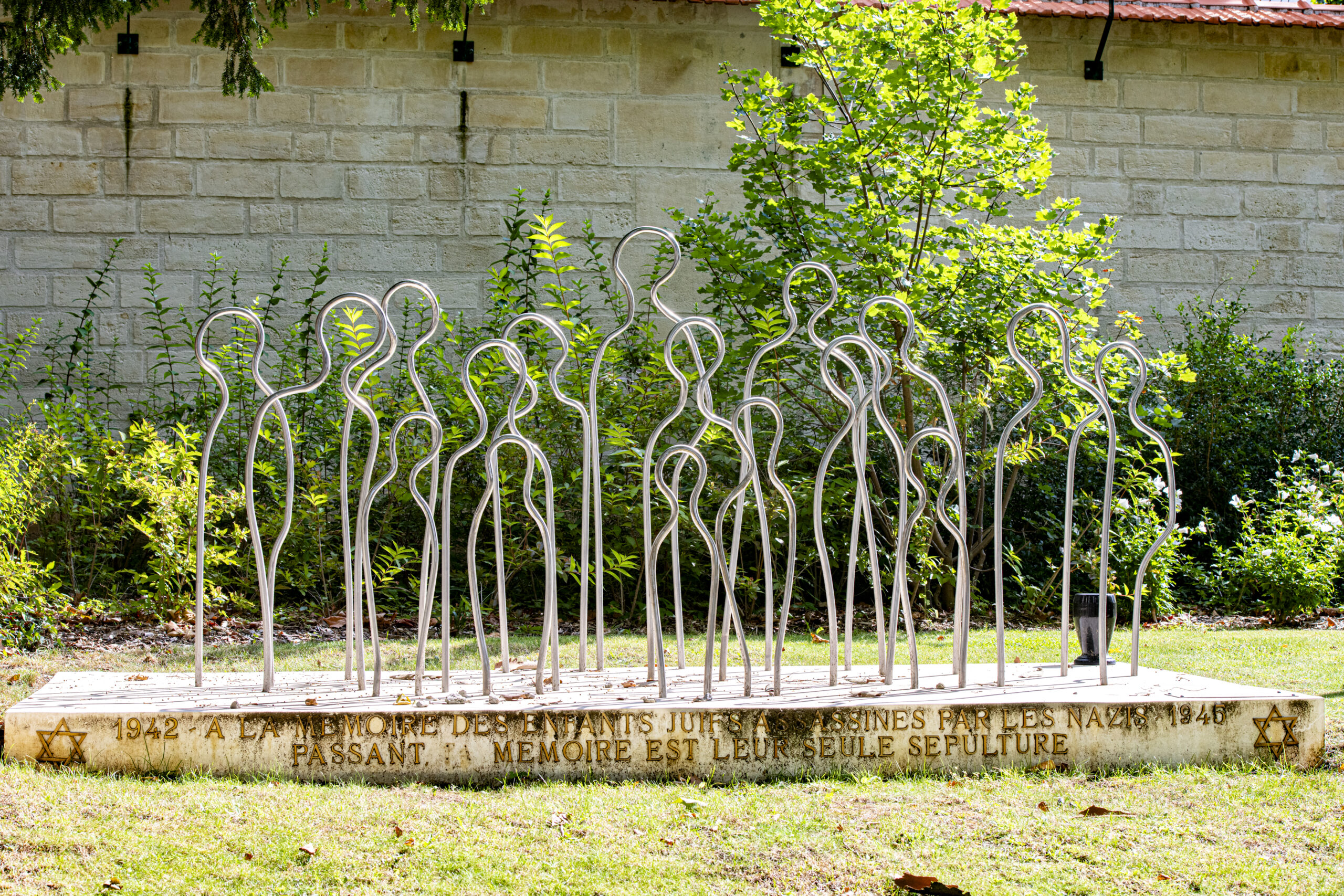
© Vincent Gerbet
Monument description
Inaugurated by the Mayor of Paris, Anne Hidalgo, on 17 October 2017, this work is signed by the Spanish Basque sculptor, Casto Solano Marroyo.
The silhouettes of children, of different sizes to understand that they were of any age, are identified by a thick shiny aluminum wire of gray color, attached to the base.
The void shows their absence while allowing a real presence of the individual and collective body.
The group shows the will of the Reich and the government of Vichy to make disappear the Jewish population.
On the base, between two Jewish stars is written:
1942 – IN MEMORY OF NAZI MURDER OF JEWISH CHILDREN – 1945
PASSING, YOUR MEMORY IS THEIR ONLY BURIAL
The extermination of Jewish children
At the beginning of World War II in September 1939, there were approximately 1.6 million Jewish children living in the territories that the German armies and their allies would occupy.
In May 1945, at the end of that war, more than a million of them were murdered, victims of the extermination program planned by the Nazis.
In his chronicles of the Warsaw ghetto, historian Emanuel Ringelblum wrote in 1942: Even in the most barbaric times a spark shone in the hardest hearts, and children were spared. Everything else is the Hitler Beast. It devours those who are dearest to us, the most worthy of pity – our innocent children.” (French version by Léon Poliakov, ed. Robert Laffont, Paris, 1993)
Persecution of the Jews begins in Germany in 1933.
In 1939, they are methodically deprived of their civil rights and property.
An anti-Semitic policy is organized on the whole of the occupied territories: in the east of the continent, the Nazis isolate the Jews in ghettos, in the west in internment camps.
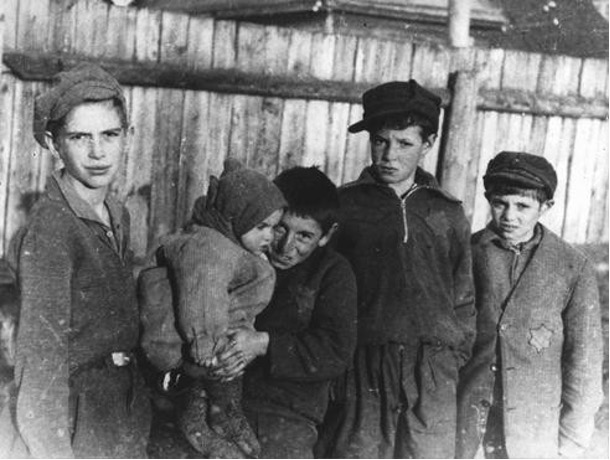
Group of children in the ghetto of Kovno, between 1941 and 1943 (today Kaunas in Lithuania)
© US Holocaust Memorial Museum
In June 1941, the Einsatzgruppen follow the German army into the Soviet Union and assassinate nearly one million Jewish men, women and children in six months.
From December 1941 to September 1942, and then in June and July 1944, the Chelmno centre (German: Kulmhof) killed more than 150,000 people in gas tanks. It is a first step towards the establishment of large gas chamber extermination centers such as those in Sobibór, Treblinka, Majdanek, Chelmno, Bełżec and Auschwitz-Birkenau.
The death rate of children is excessively high: not more than 6 to 11% of pre-war Jewish children in Europe survived, compared with 33% of adults. The Nazis frequently launched “child operations” to reduce the number of “unnecessary mouths” in ghettos. In the camps, children, elderly people and pregnant women were regularly sent to gas chambers upon arrival.
Children were used for medical experiments, e.g.:
– at Ravensbrück, in January 1944, doctors Treite and Schumann sterilise alive at least 120 little Gypsies, none of them surviving.
– in Neuengamme, SS doctor Kurt Heissmeyer performs experiments on tuberculosis on 20 children and then removes their lymph glands. Children, who became prisoners, were murdered in Hamburg in April 1945.
In Auschwitz, an estimated 216,000 Jewish children were deported.
19,000 were registered, including 6,700 adolescents selected for forced labour.
Almost all the others were murdered in the gas chambers upon arrival.
From May 1943 to January 1945, Dr Mengele conducted physiological studies on young Gypsies with a rare disease and comparative studies on twin children who had been murdered for autopsies.
When the camp was liberated on 27 January 1945, Soviet troops found 451 children among 9,000 survivors.
Shortly after the liberation, Jewish agencies across Europe searched for survivors. In the Benelux (Belgium/Netherlands/Luxembourg), 9,000 Jewish children are reported to have survived.
In Poland, most of the approximately 5,000 children out of less than one million have escaped extermination by hiding.
The deportation of Jewish children in France
Between 1942 and 1944, 11,450 Jewish children were arrested, mostly by the French police:
– 6 200 in Paris, including during the raid of the Vel’ d’Hiv on 16 and 17 July 1942: 4 115 children
– More than 700 in the suburbs
– 4,500 in regions
2,000 children were under six years old, 4,500 between 6 and 12 and 4,500 between 12 and 17.
Under the authority of the Prefecture of Loiret in Orléans (France), the camps of Pithiviers and Beaune-la-Rolande house the majority of these detainees, supervised by gendarmes or French customs officers.
In Pithiviers, at the end of July 1942, mothers are deported, leaving behind them young children. “Children are forcibly taken from their parents,” said Annette Krajcer, who was 12 when she was separated from her mother. The children stay in the camp, some are so young that they still can’t say their names.
They are looked after by admirable social workers and nurses. Marie-Louise Blondeau, Annette Monod, Madeleine Rolland, Micheline Cahen-Bellair, Adélaïde Hautval were among those who helped, alerted and testified.
From 15 to 25 August, four convoys transfer 3,081 young and sick children to the Drancy camp. The vast majority will be murdered in Auschwitz-Birkenau.
This first deportation of children was not claimed by the occupier but was due to the « zeal » of René Bousquet, secretary general of the police, acting as director general of the national police under the Vichy regime, organizer of the Rafle du Vel d’Hiv, and that of Marseille in 1943.
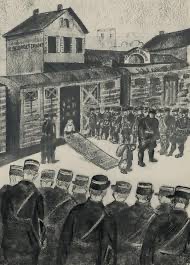
© CERCIL/DR
The majority of police officers have «done their job» despite protests, pain on both sides, despite toys left in barracks or on the platform of the station of Pithiviers.
From 1943, children, with or without their families, are directed to the Camp de Drancy (in the Paris region) and then transported by leaded wagons to death.
4,400 children, interned in the Loiret camps of Pithiviers and Beaune-la-Rolande in France, will be murdered for the most part in the Auschwitz-Birkenau camp.
The former passenger station of Pithiviers, closed in 1969, has been rehabilitated by the Holocaust Memorial. A museum dedicated to the Jews interned in these two camps was inaugurated there in July 2022.
The CERCIL, Children’s Memorial Museum of the Vel d’Hiv, in Orléans (Loiret), inaugurated by Simone Veil in 2011 is dedicated to the thousands of children who were detained in these camps.
We must associate, in order not to forget them, the victims of the camp of Jargeau, about forty kilometers from the camp of Pithiviers, imprisoned from March 1941 to 31 December 1945, 1,700 people including 1,200 nomads.
At least 45 deaths were reported, and of the 44 children born in the camp, 8 did not survive.
By the number of interned people and its duration of operation, Jargeau is one of the largest internment camps for nomads in France.
Relief for Jewish children
– Between 1938 and 1940, the Kindertransports (children’s transport) is the informal name of a series of rescue operations that allowed to transfer from Nazi Germany to Great Britain thousands of children: after the antisemitic violence organized by the Nazis during the « Crystal Night » in November 1938, the British government, under pressure from its public opinion and refugee aid committees, agreed to allow an undetermined number of children under 17 years of age from Germany and the territories occupied by Germany (at this time Austria and the Czech territories) to enter Great Britain.
Between 9,000 and 10,000 children, including 7,500 Jews, will be saved but most of them will not find their parents who were murdered during the war.
– When the Allied troops advance, evacuations from the camps explain the presence of children in the concentration camps. In 1945, at the Buchenwald camp, a solidarity was organized when hundreds of children arrived after the evacuation of Auschwitz. Jorge Semprun testified: They were extremely shocked by the brutality and perversity of the SS. They had been travelling for days, completely exhausted. The Hauptsturmführer’s welcome speech began with a cannonade of insults. He announced that he had given the order that each of them receive twenty-five cuts of beef nerve and they would have nothing to eat… The clandestine resistance of political prisoners then brought about a whole chain of solidarity to save them from certain death: organization of a special block [n°66] to spare them the promiscuity and sexual assaults of the Polish kapos and SS guards, safe houses for workers, soup-topping collections.”
900 Jewish children were saved in Buchenwald by the clandestine organization of political deportees, French and German.
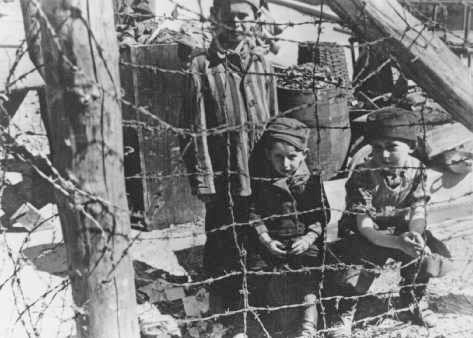
Block 66’s surviving children in Buchenwald
© FNDIRP
Solidarity is established among a part of the occupied population:
For example, in Belgium 4,000 children were saved, in France between 60 and 70,000.
Several organizations have helped to conceal them under false identity in individual families or foster homes. A network has been well organized with the help of the OSA (Relief Children’s Organization), the Éclaireurs israélites de France, Jewish communist organizations such as the UJRE (Union of Jews for Resistance and Mutual Assistance), Christian networks both Catholic and Protestant.
– The Children’s Homes, largely under the responsibility of the OSA, are opening despite the dangers of denunciations as for example in France:
– the children’s home of Chabannes, in Saint-Pierre-de-Fursac (Creuse) which from November 1939 to January 1944 offered shelter to 284 children, originating from France, Germany, Austria and Poland, aged between 2 and 18 years. The Château de Chabannes is a OSA house, run by Félix Chevrier. The staff members are mostly Jewish but do not have French citizenship. After a raid in 1942, 6 children were deported. The house closes at the end of 1943. Some children are smuggled to Switzerland.
– the children’s home in Chamonix (Haute-Savoie) housed dozens of children, from late 1942 until the liberation in summer 1944.
About ten children will enter Spain clandestinely and reach Israel.
– The Maison d’Izieu (Ain) opened by Sabine and Miron Zlatin, it has welcomed more than a hundred children since 1943. But on 6 April 1944, 44 children aged 4 to 17 and 7 teachers were arrested by order of Klaus Barbie, head of the Gestapo in Lyon. Sabine Zlatin was absent that day. With the exception of two teenagers and Miron Zlatin, who were deported in convoy 73 to the Baltic States and murdered in Reval (now Tallinn), Estonia, the group was gassed upon arrival at Auschwitz-Birkenau. Only one adult, Léa Feldblum, survived.
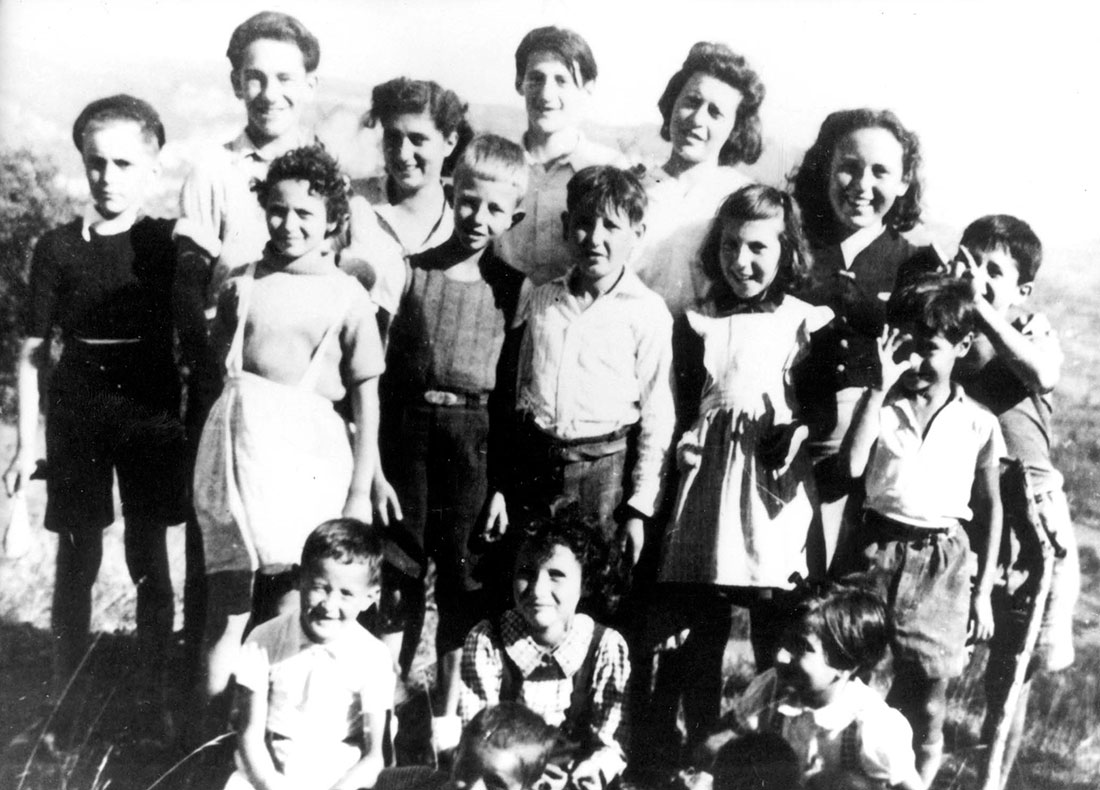
Children and carers at the Izieu children’s home, summer 1943
© Yad Vashem Photographic Archive n°1408/19
Transmission of this memory to Paris
– commemorative plaques in schools: in 1997, of former students of the boys’ school on Tlemcen street in the 20th arrondissement of Paris, who had escaped deportation or were hiding during the war, had the idea of doing research on their former Jewish comrades. Using school records, a list of 163 children was established that they had died in deportation. This list was posted inside the school with their names and ages. A plaque was placed on the outside wall of the school. The text on this first plate is as follows:
In memory of the students of this school, deported because born Jews, innocent victims of Nazi barbarity, with the active complicity of the government of Vichy. They were exterminated in the death camps.
Le « Comité de l’école Tlemcen » s’est créé en association, regroupant les premiers acteurs, des enseignants, des parents et leurs enfants, des responsables académiques, des élus, tous partageant les buts de l’association : « entretenir la mémoire, lutter contre l’oubli, le négationnisme, l’antisémitisme, le racisme ; dire, en évoquant les enfants, ce que fut l’horreur de ce génocide pour ces innocents « coupables d’être nés juifs » ; rappeler que les idées du fascisme n’ont pas disparu ; répéter que nous devons rester vigilants, toujours. »
Ce travail de recherche a été poursuivi dans tous les établissements scolaires parisiens par les bénévoles de l’AMEJD (Associations pour la Mémoire des Enfants Juifs Déportés). Toutes les plaques ont été financées par la Mairie de Paris, comme celle-ci :
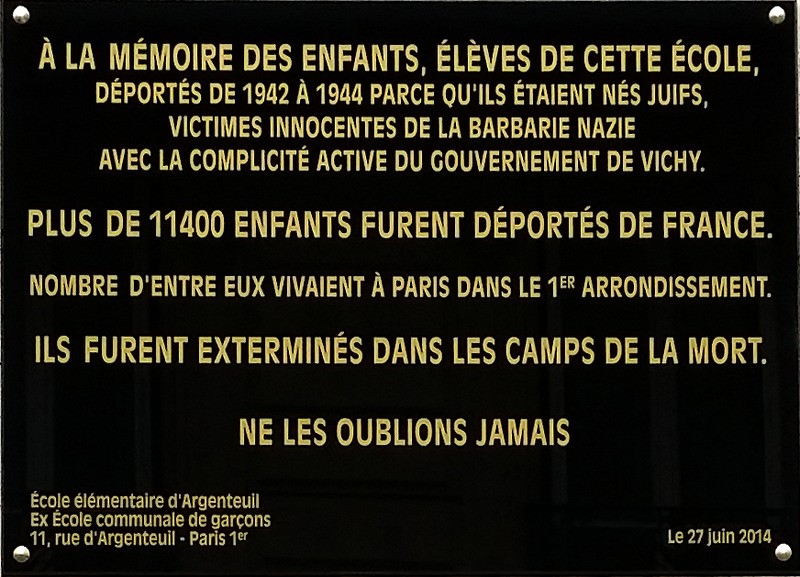
Plaque de l’Ecole élémentaire d’Argenteuil – Paris 1er
© AFMD 75
Steles in the parks and gardens of Paris
As for children too young to attend school, it was decided to erect steles inside parks and gardens, places that were forbidden to them during the occupation by regulation of the Vichy government. It is written on the steles:
Passing, read their names, your memory is their only burial,
those who died without burial
In some parks, names are inscribed, e.g.: in the square Edouard Vailland (20th), the square du Temple (3rd), the square de la Folie-Titon (11th). Between the rue des Rosiers and the rue des Franc-Bourgeois is the Parvis of the 260 children arrested during the Veld’ Hiv’ raid, all of whom are enrolled in the public school of the Hospitalières Saint-Gervais.
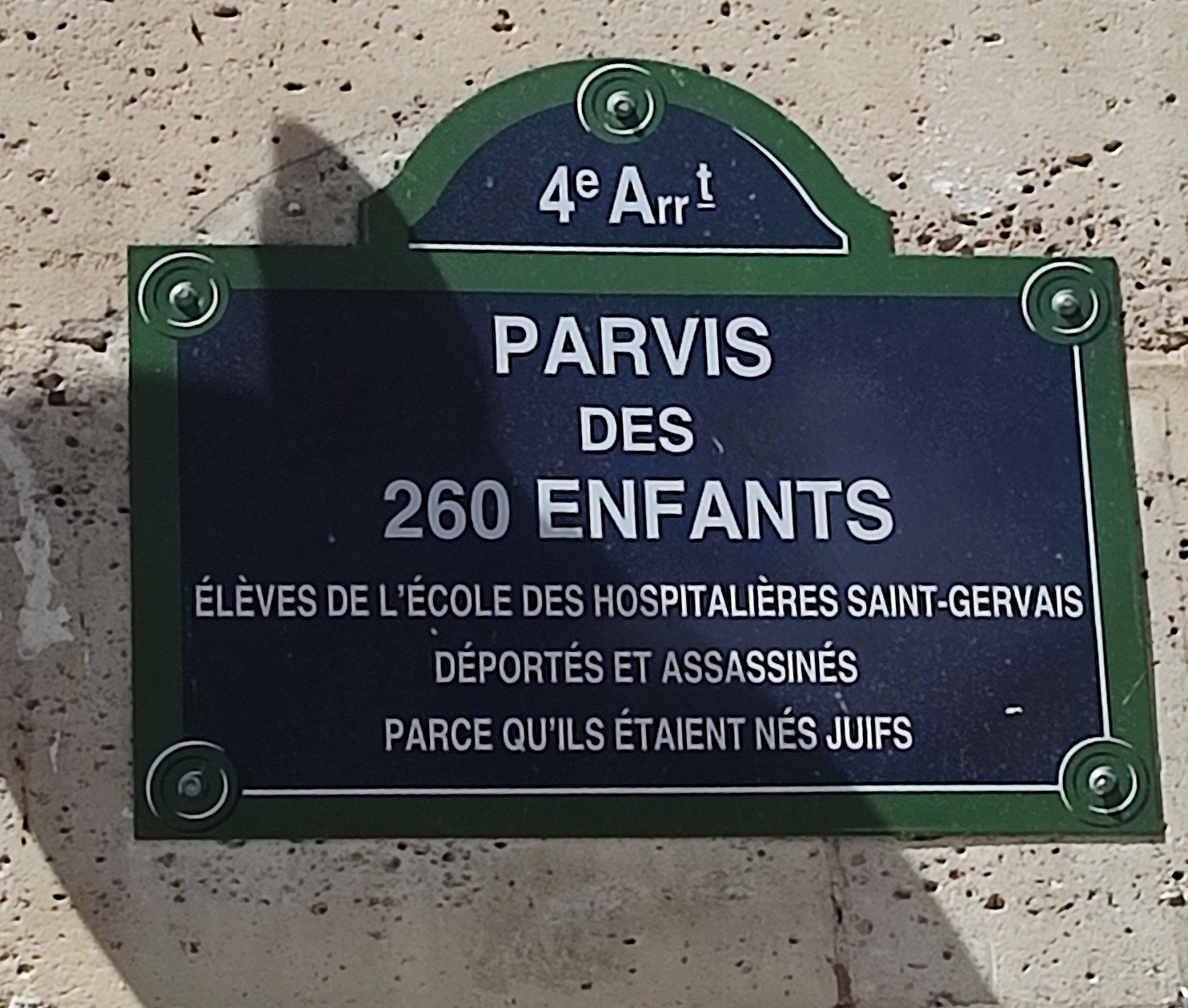
© AFMD 75
The Children’s Memorial Garden of Vel d’Hiv’
Nélaton Street in the 15th is a place of remembrance and remembrance dedicated to 4 115 children taken, separated from their parents, deported and exterminated at Auschwitz-Birkenau. It was designed as a plant piece surrounded by a treetop on which grow white-flowered vines. Sculptures depicting the tearing of children and mothers. Photos of entire families with their biographies are on display.

© David Gognies/AFMD 75
The liberation from Nazi tyranny does not mark the end of suffering for the few surviving Jewish children. Many have faced life alone, with the loss of many members of their families.
Sources
– https://www.appl-lachaise.net/monument-aux-enfants-juifs-assassines-par-les-nazis/
– https://encyclopedia.ushmm.org/content/fr/article/plight-of-jewish-children
– https://encyclopedia.ushmm.org/content/fr/article/kindertransport-1938-40
– http://www.memorialdelashoah.org/upload/minisites/enfantscaches/
– https://www.yadvashem.org/yv/fr/expositions/maisons-denfants/chabannes/index.asp
– https://fr.wikipedia.org/wiki/Enfant_cach%C3%A9
– ANQUETIL Frédéric, Annette Monod, L’ange du Vel d’Hiv, de Drancy et des camps du Loiret, éd. Ampelos, 2018.
– BERRI Claude, Le Vieil Homme et l’Enfant, film, 1967.
– CHRISTOPHE Francine, Une petite fille privilégiée – Une enfant dans le monde des camps 1942-1945, éd. L’Harmattan, 1996 ; rééd. Pocket 2001.
CLING Daniel, Adélaïde H, une résistante alsacienne, film sur Adélaïde Hautval, 2021.
– Fondation pour la Mémoire de la Déportation, Mémoire Vivante, n° 57 : Les enfants et les adolescents dans le système concentrationnaire nazi (sujet du Concours National de la Résistance et de la Déportation, 2008/2009.
– GAREL Georges, avec la participation de Katy HAZAN, Le sauvetage des enfants juifs par l’OSE, éd. Le Manuscrit, coll. « Témoignages de la Shoah », 2012.
– GOSSELS Lisa et WETHERELL, Les enfants de Chavannes, film, 1999.
– MALLE Louis, Au revoir les enfants, film, 1987.
– ZAJDE Nathalie, Les enfants cachés en France, éd. Odile Jacob, Paris, 2012.
In memory of the Jewish children
Stele inaugurated on 17 October 2017

© Vincent Gerbet
Monument description
Inaugurated by the Mayor of Paris, Anne Hidalgo, on 17 October 2017, this work is signed by the Spanish Basque sculptor, Casto Solano Marroyo.
The silhouettes of children, of different sizes to understand that they were of any age, are identified by a thick shiny aluminum wire of gray color, attached to the base.
The void shows their absence while allowing a real presence of the individual and collective body.
The group shows the will of the Reich and the government of Vichy to make disappear the Jewish population.
On the base, between two Jewish stars is written:
1942 – IN MEMORY OF NAZI MURDER OF JEWISH CHILDREN – 1945
PASSING, YOUR MEMORY IS THEIR ONLY BURIAL
The extermination of Jewish children
At the beginning of World War II in September 1939, there were approximately 1.6 million Jewish children living in the territories that the German armies and their allies would occupy.
In May 1945, at the end of that war, more than a million of them were murdered, victims of the extermination program planned by the Nazis.
In his chronicles of the Warsaw ghetto, historian Emanuel Ringelblum wrote in 1942: Even in the most barbaric times a spark shone in the hardest hearts, and children were spared. Everything else is the Hitler Beast. It devours those who are dearest to us, the most worthy of pity – our innocent children.” (French version by Léon Poliakov, ed. Robert Laffont, Paris, 1993)
Persecution of the Jews begins in Germany in 1933.
In 1939, they are methodically deprived of their civil rights and property.
An anti-Semitic policy is organized on the whole of the occupied territories: in the east of the continent, the Nazis isolate the Jews in ghettos, in the west in internment camps.

Group of children in the ghetto of Kovno, between 1941 and 1943 (today Kaunas in Lithuania)
© US Holocaust Memorial Museum
In June 1941, the Einsatzgruppen follow the German army into the Soviet Union and assassinate nearly one million Jewish men, women and children in six months.
From December 1941 to September 1942, and then in June and July 1944, the Chelmno centre (German: Kulmhof) killed more than 150,000 people in gas tanks. It is a first step towards the establishment of large gas chamber extermination centers such as those in Sobibór, Treblinka, Majdanek, Chelmno, Bełżec and Auschwitz-Birkenau.
The death rate of children is excessively high: not more than 6 to 11% of pre-war Jewish children in Europe survived, compared with 33% of adults. The Nazis frequently launched “child operations” to reduce the number of “unnecessary mouths” in ghettos. In the camps, children, elderly people and pregnant women were regularly sent to gas chambers upon arrival.
Children were used for medical experiments, e.g.:
– at Ravensbrück, in January 1944, doctors Treite and Schumann sterilise alive at least 120 little Gypsies, none of them surviving.
– in Neuengamme, SS doctor Kurt Heissmeyer performs experiments on tuberculosis on 20 children and then removes their lymph glands. Children, who became prisoners, were murdered in Hamburg in April 1945.
In Auschwitz, an estimated 216,000 Jewish children were deported.
19,000 were registered, including 6,700 adolescents selected for forced labour.
Almost all the others were murdered in the gas chambers upon arrival.
From May 1943 to January 1945, Dr Mengele conducted physiological studies on young Gypsies with a rare disease and comparative studies on twin children who had been murdered for autopsies.
When the camp was liberated on 27 January 1945, Soviet troops found 451 children among 9,000 survivors.
Shortly after the liberation, Jewish agencies across Europe searched for survivors. In the Benelux (Belgium/Netherlands/Luxembourg), 9,000 Jewish children are reported to have survived.
In Poland, most of the approximately 5,000 children out of less than one million have escaped extermination by hiding.
The deportation of Jewish children in France
Between 1942 and 1944, 11,450 Jewish children were arrested, mostly by the French police:
– 6 200 in Paris, including during the raid of the Vel’ d’Hiv on 16 and 17 July 1942: 4 115 children
– More than 700 in the suburbs
– 4,500 in regions
2,000 children were under six years old, 4,500 between 6 and 12 and 4,500 between 12 and 17.
Under the authority of the Prefecture of Loiret in Orléans (France), the camps of Pithiviers and Beaune-la-Rolande house the majority of these detainees, supervised by gendarmes or French customs officers.
In Pithiviers, at the end of July 1942, mothers are deported, leaving behind them young children. “Children are forcibly taken from their parents,” said Annette Krajcer, who was 12 when she was separated from her mother. The children stay in the camp, some are so young that they still can’t say their names.
They are looked after by admirable social workers and nurses. Marie-Louise Blondeau, Annette Monod, Madeleine Rolland, Micheline Cahen-Bellair, Adélaïde Hautval were among those who helped, alerted and testified.
From 15 to 25 August, four convoys transfer 3,081 young and sick children to the Drancy camp. The vast majority will be murdered in Auschwitz-Birkenau.
This first deportation of children was not claimed by the occupier but was due to the « zeal » of René Bousquet, secretary general of the police, acting as director general of the national police under the Vichy regime, organizer of the Rafle du Vel d’Hiv, and that of Marseille in 1943.

© CERCIL/DR
The majority of police officers have «done their job» despite protests, pain on both sides, despite toys left in barracks or on the platform of the station of Pithiviers.
From 1943, children, with or without their families, are directed to the Camp de Drancy (in the Paris region) and then transported by leaded wagons to death.
4,400 children, interned in the Loiret camps of Pithiviers and Beaune-la-Rolande in France, will be murdered for the most part in the Auschwitz-Birkenau camp.
The former passenger station of Pithiviers, closed in 1969, has been rehabilitated by the Holocaust Memorial. A museum dedicated to the Jews interned in these two camps was inaugurated there in July 2022.
The CERCIL, Children’s Memorial Museum of the Vel d’Hiv, in Orléans (Loiret), inaugurated by Simone Veil in 2011 is dedicated to the thousands of children who were detained in these camps.
We must associate, in order not to forget them, the victims of the camp of Jargeau, about forty kilometers from the camp of Pithiviers, imprisoned from March 1941 to 31 December 1945, 1,700 people including 1,200 nomads.
At least 45 deaths were reported, and of the 44 children born in the camp, 8 did not survive.
By the number of interned people and its duration of operation, Jargeau is one of the largest internment camps for nomads in France.
Relief for Jewish children
– Between 1938 and 1940, the Kindertransports (children’s transport) is the informal name of a series of rescue operations that allowed to transfer from Nazi Germany to Great Britain thousands of children: after the antisemitic violence organized by the Nazis during the « Crystal Night » in November 1938, the British government, under pressure from its public opinion and refugee aid committees, agreed to allow an undetermined number of children under 17 years of age from Germany and the territories occupied by Germany (at this time Austria and the Czech territories) to enter Great Britain.
Between 9,000 and 10,000 children, including 7,500 Jews, will be saved but most of them will not find their parents who were murdered during the war.
– When the Allied troops advance, evacuations from the camps explain the presence of children in the concentration camps. In 1945, at the Buchenwald camp, a solidarity was organized when hundreds of children arrived after the evacuation of Auschwitz. Jorge Semprun testified: They were extremely shocked by the brutality and perversity of the SS. They had been travelling for days, completely exhausted. The Hauptsturmführer’s welcome speech began with a cannonade of insults. He announced that he had given the order that each of them receive twenty-five cuts of beef nerve and they would have nothing to eat… The clandestine resistance of political prisoners then brought about a whole chain of solidarity to save them from certain death: organization of a special block [n°66] to spare them the promiscuity and sexual assaults of the Polish kapos and SS guards, safe houses for workers, soup-topping collections.”
900 Jewish children were saved in Buchenwald by the clandestine organization of political deportees, French and German.

Block 66’s surviving children in Buchenwald
© FNDIRP
Solidarity is established among a part of the occupied population:
For example, in Belgium 4,000 children were saved, in France between 60 and 70,000.
Several organizations have helped to conceal them under false identity in individual families or foster homes. A network has been well organized with the help of the OSA (Relief Children’s Organization), the Éclaireurs israélites de France, Jewish communist organizations such as the UJRE (Union of Jews for Resistance and Mutual Assistance), Christian networks both Catholic and Protestant.
– The Children’s Homes, largely under the responsibility of the OSA, are opening despite the dangers of denunciations as for example in France:
– the children’s home of Chabannes, in Saint-Pierre-de-Fursac (Creuse) which from November 1939 to January 1944 offered shelter to 284 children, originating from France, Germany, Austria and Poland, aged between 2 and 18 years. The Château de Chabannes is a OSA house, run by Félix Chevrier. The staff members are mostly Jewish but do not have French citizenship. After a raid in 1942, 6 children were deported. The house closes at the end of 1943. Some children are smuggled to Switzerland.
– the children’s home in Chamonix (Haute-Savoie) housed dozens of children, from late 1942 until the liberation in summer 1944.
About ten children will enter Spain clandestinely and reach Israel.
– The Maison d’Izieu (Ain) opened by Sabine and Miron Zlatin, it has welcomed more than a hundred children since 1943. But on 6 April 1944, 44 children aged 4 to 17 and 7 teachers were arrested by order of Klaus Barbie, head of the Gestapo in Lyon. Sabine Zlatin was absent that day. With the exception of two teenagers and Miron Zlatin, who were deported in convoy 73 to the Baltic States and murdered in Reval (now Tallinn), Estonia, the group was gassed upon arrival at Auschwitz-Birkenau. Only one adult, Léa Feldblum, survived.

Children and carers at the Izieu children’s home, summer 1943
© Yad Vashem Photographic Archive n°1408/19
Transmission of this memory to Paris
– commemorative plaques in schools: in 1997, of former students of the boys’ school on Tlemcen street in the 20th arrondissement of Paris, who had escaped deportation or were hiding during the war, had the idea of doing research on their former Jewish comrades. Using school records, a list of 163 children was established that they had died in deportation. This list was posted inside the school with their names and ages. A plaque was placed on the outside wall of the school. The text on this first plate is as follows:
In memory of the students of this school, deported because born Jews, innocent victims of Nazi barbarity, with the active complicity of the government of Vichy. They were exterminated in the death camps.
Le « Comité de l’école Tlemcen » s’est créé en association, regroupant les premiers acteurs, des enseignants, des parents et leurs enfants, des responsables académiques, des élus, tous partageant les buts de l’association : « entretenir la mémoire, lutter contre l’oubli, le négationnisme, l’antisémitisme, le racisme ; dire, en évoquant les enfants, ce que fut l’horreur de ce génocide pour ces innocents « coupables d’être nés juifs » ; rappeler que les idées du fascisme n’ont pas disparu ; répéter que nous devons rester vigilants, toujours. »
Ce travail de recherche a été poursuivi dans tous les établissements scolaires parisiens par les bénévoles de l’AMEJD (Associations pour la Mémoire des Enfants Juifs Déportés). Toutes les plaques ont été financées par la Mairie de Paris, comme celle-ci :

Plaque de l’Ecole élémentaire d’Argenteuil – Paris 1er
© AFMD 75
Steles in the parks and gardens of Paris
As for children too young to attend school, it was decided to erect steles inside parks and gardens, places that were forbidden to them during the occupation by regulation of the Vichy government. It is written on the steles:
Passing, read their names, your memory is their only burial,
those who died without burial
In some parks, names are inscribed, e.g.: in the square Edouard Vailland (20th), the square du Temple (3rd), the square de la Folie-Titon (11th). Between the rue des Rosiers and the rue des Franc-Bourgeois is the Parvis of the 260 children arrested during the Veld’ Hiv’ raid, all of whom are enrolled in the public school of the Hospitalières Saint-Gervais.

© AFMD 75
The Children’s Memorial Garden of Vel d’Hiv’
Nélaton Street in the 15th is a place of remembrance and remembrance dedicated to 4 115 children taken, separated from their parents, deported and exterminated at Auschwitz-Birkenau. It was designed as a plant piece surrounded by a treetop on which grow white-flowered vines. Sculptures depicting the tearing of children and mothers. Photos of entire families with their biographies are on display.

© David Gognies/AFMD 75
The liberation from Nazi tyranny does not mark the end of suffering for the few surviving Jewish children. Many have faced life alone, with the loss of many members of their families.
Sources
– https://www.appl-lachaise.net/monument-aux-enfants-juifs-assassines-par-les-nazis/
– https://encyclopedia.ushmm.org/content/fr/article/plight-of-jewish-children
– https://encyclopedia.ushmm.org/content/fr/article/kindertransport-1938-40
– http://www.memorialdelashoah.org/upload/minisites/enfantscaches/
– https://www.yadvashem.org/yv/fr/expositions/maisons-denfants/chabannes/index.asp
– https://fr.wikipedia.org/wiki/Enfant_cach%C3%A9
– ANQUETIL Frédéric, Annette Monod, L’ange du Vel d’Hiv, de Drancy et des camps du Loiret, éd. Ampelos, 2018.
– BERRI Claude, Le Vieil Homme et l’Enfant, film, 1967.
– CHRISTOPHE Francine, Une petite fille privilégiée – Une enfant dans le monde des camps 1942-1945, éd. L’Harmattan, 1996 ; rééd. Pocket 2001.
CLING Daniel, Adélaïde H, une résistante alsacienne, film sur Adélaïde Hautval, 2021.
– Fondation pour la Mémoire de la Déportation, Mémoire Vivante, n° 57 : Les enfants et les adolescents dans le système concentrationnaire nazi (sujet du Concours National de la Résistance et de la Déportation, 2008/2009.
– GAREL Georges, avec la participation de Katy HAZAN, Le sauvetage des enfants juifs par l’OSE, éd. Le Manuscrit, coll. « Témoignages de la Shoah », 2012.
– GOSSELS Lisa et WETHERELL, Les enfants de Chavannes, film, 1999.
– MALLE Louis, Au revoir les enfants, film, 1987.
– ZAJDE Nathalie, Les enfants cachés en France, éd. Odile Jacob, Paris, 2012.
Délégation de Paris des Amis de la Fondation
pour la Mémoire de la Déportation
31 Boulevard Saint-Germain 75005 Paris
Contact : afmd.dt75@gmail.com
©AFMD75

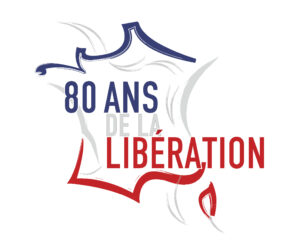
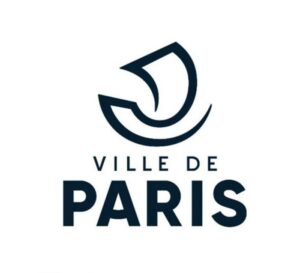
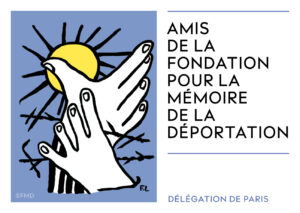
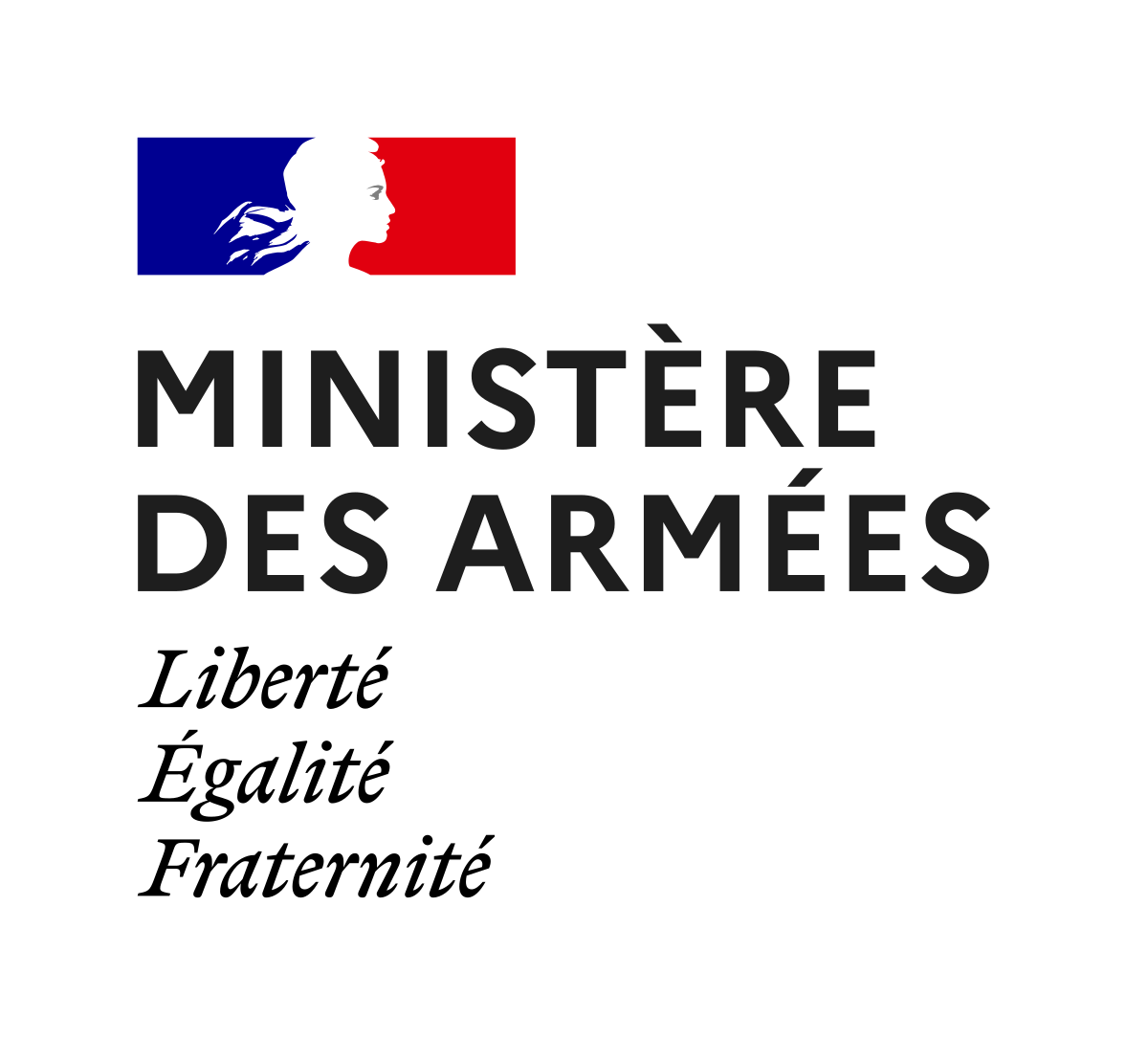
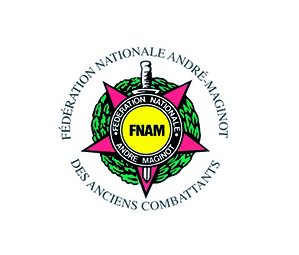
Délégation de Paris
des Amis de la Fondation
pour la Mémoire de la Déportation
31 Boulevard Saint-Germain
75005 Paris
Contact :
afmd75@gmail.com
©AFMD75
Délégation de Paris
des Amis de la Fondation
pour la Mémoire
de la Déportation
31 Boulevard Saint-Germain
75005 Paris
Contact
afmd75@gmail.com
©AFMD75

